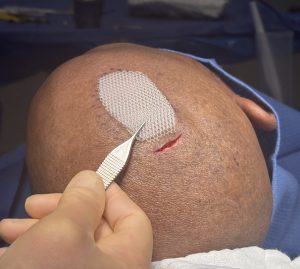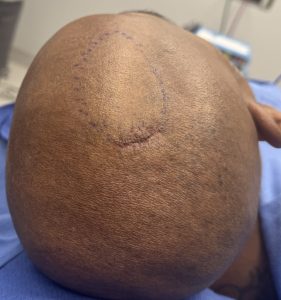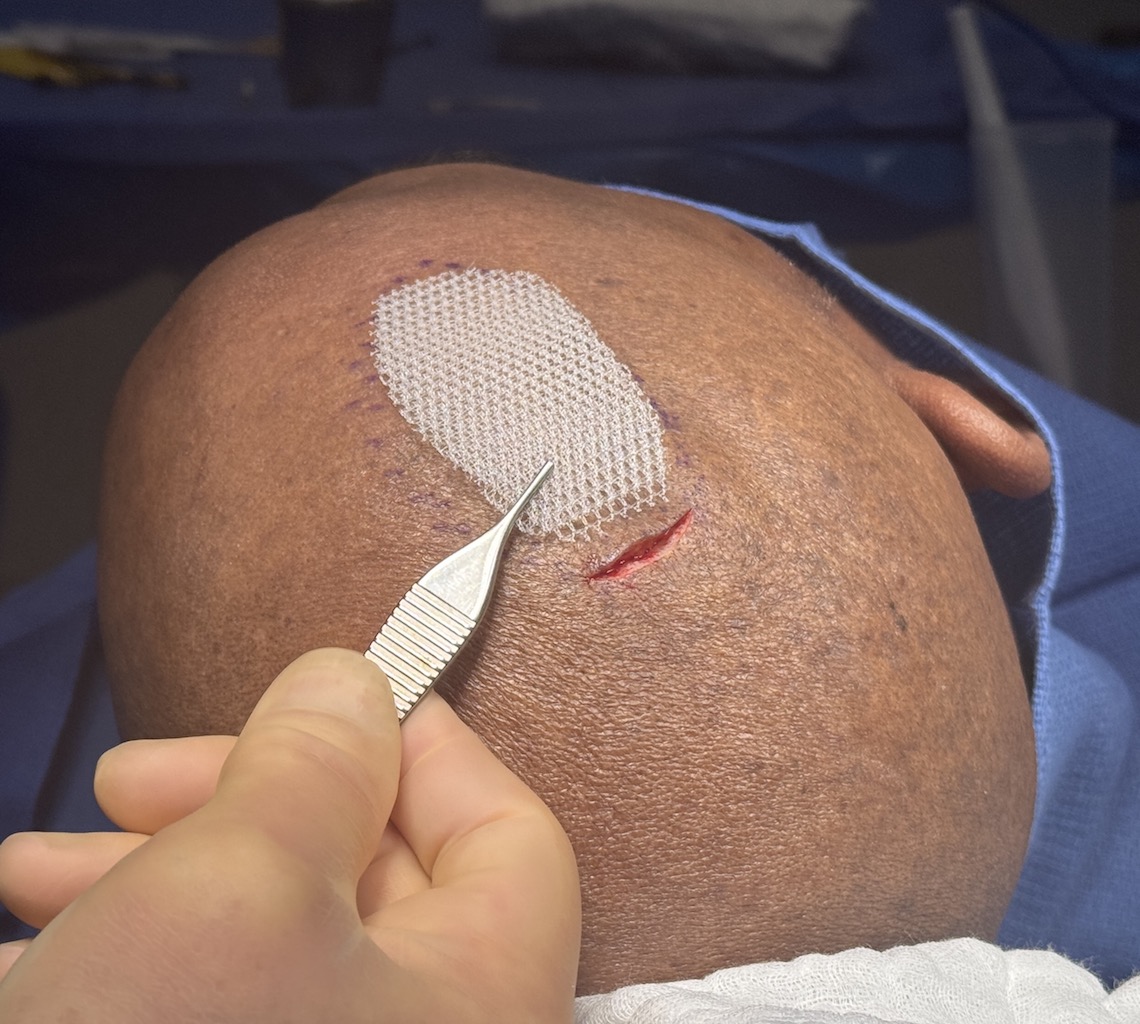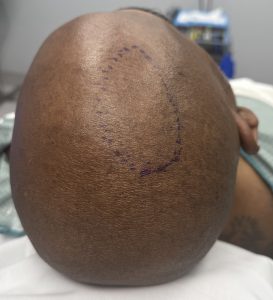Aesthetic skull augmentations today are most effectively done by a custom skull implant design. Gone are the days of the use of PMMA bone cements, which may be fine as an inlay method for skull bone defects which is their history. But PMMA bone cements is not a highly effective method as an onlay contouring material where specific surface area coverage and various thicknesses throughout its shape are needed. Not to mention that the ability to postoperatively modify or revise bone cements is very limited to non-existant.
But despite the overwhelming benefits of custom implants for most larger skull augmentations there is an occasional need in very small skull augmentations where custom designs may not one needed. In these circumstances a variety of off-the-materials are available that may suffice for the desired effect. For small thin skull augmentations the use of ePTFE or mesh implant materials may suffice.


The skull is tolerant of a wide variety of implant materials. Ultimately it does not matter what the material is but rather what its handling and placement properties are.
Dr. Barry Eppley
World-Renowned Plastic Surgeon




